
Caliban is the second-largest retrograde irregular satellite of Uranus. It was discovered on 6 September 1997 by Brett J. Gladman, Philip D. Nicholson, Joseph A. Burns, and John J. Kavelaars using the 200-inch Hale Telescope together with Sycorax and given the temporary designation S/1997 U 1.

Ananke is a retrograde irregular moon of Jupiter. It was discovered by Seth Barnes Nicholson at Mount Wilson Observatory in 1951. It is named after the Greek mythological Ananke, the personification of necessity, and the mother of the Moirai (Fates) by Zeus. The adjectival form of the name is Anankean.

Themisto, also known as Jupiter XVIII, is a small prograde irregular satellite of Jupiter. It was discovered in 1975, subsequently lost, and rediscovered in 2000.

Setebos is one of the outermost retrograde irregular satellites of Uranus. It was discovered on 18 July 1999 by John J. Kavelaars et al. and provisionally designated S/1999 U 1.

The moons of Saturn are numerous and diverse, ranging from tiny moonlets only tens of meters across to the enormous Titan, which is larger than the planet Mercury. There are 146 moons with confirmed orbits, the most of any planet in the solar system. This number does not include the many thousands of moonlets embedded within Saturn's dense rings, nor hundreds of possible kilometer-sized distant moons that have been observed on single occasions. Seven Saturnian moons are large enough to have collapsed into a relaxed, ellipsoidal shape, though only one or two of those, Titan and possibly Rhea, are currently in hydrostatic equilibrium. Three moons are particularly notable. Titan is the second-largest moon in the Solar System, with a nitrogen-rich Earth-like atmosphere and a landscape featuring river networks and hydrocarbon lakes. Enceladus emits jets of ice from its south-polar region and is covered in a deep layer of snow. Iapetus has contrasting black and white hemispheres as well as an extensive ridge of equatorial mountains among the tallest in the solar system.

Kiviuq is a prograde irregular satellite of Saturn. It was discovered by J. J. Kavelaars et al. in 2000, and given the temporary designation S/2000 S 5. It was named after Kiviuq, a hero of Inuit mythology.

Ijiraq, or Saturn XXII (22), is a small prograde irregular satellite of Saturn. It was discovered by the team of Brett Gladman, John J. Kavelaars, et al. in 2000, and given the temporary designation S/2000 S 6. It was named in 2003 after the ijiraq, a creature in Inuit mythology.
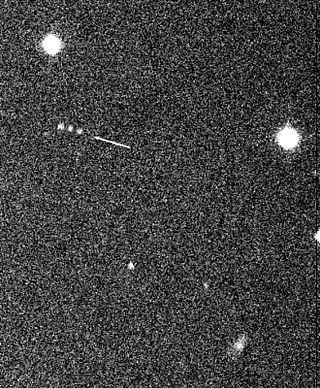
Paaliaq is a prograde irregular satellite of Saturn. It was discovered by J. J. Kavelaars, Brett J. Gladman, Jean-Marc Petit, Hans Scholl, Matthew J. Holman, Brian G. Marsden, Philip D. Nicholson and Joseph A. Burns in early October 2000, and given the temporary designation S/2000 S 2. It was named in August 2003 after a fictional shaman in the book The Curse of the Shaman, written by Michael Kusugak, who supplied Kavelaars with the names of giants from Inuit mythology that were used for other Saturnian moons.

Skathi, also named Saturn XXVII and originally spelled Skadi, is a natural satellite of the planet Saturn. Skathi is one of Saturn's irregular moons, in its Norse group of satellites. It was discovered on September 23, 2000, by a team of astronomers led by Brett Gladman. The team announced their discovery on December 7, 2000, along with seven other satellites of Saturn, namely; Tarvos, Ijiraq, Thrymr, Siarnaq, Mundilfari, Erriapus, and Suttungr. The moon was named after Skaði, a figure in Norse mythology, as part of an effort to diversify the largely Greek and Roman names of astronomical objects.
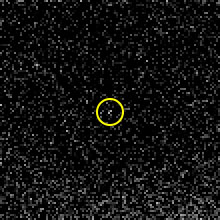
Albiorix is a prograde irregular satellite of Saturn. It was discovered by Holman and colleagues in 2000, and given the temporary designation S/2000 S 11.
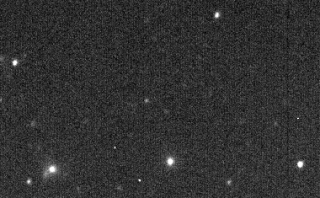
Erriapus, or Saturn XXVIII (28), is a prograde irregular satellite of Saturn. It was discovered by Brett Gladman, John J. Kavelaars and colleagues in 2000, and given the temporary designation S/2000 S 10. It was named Erriapo in August 2003 after Erriapus, a giant in Gaulish mythology; the name was changed from dative Erriapo to nominative Erriapus per IAU conventions in late 2007.
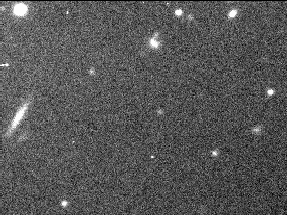
Tarvos, or Saturn XXI, is a prograde irregular satellite of Saturn. It was discovered by John J. Kavelaars et al. on September 23, 2000, and given the temporary designation S/2000 S 4. The name, given in August 2003, is after Tarvos, a deity depicted as a bull god carrying three cranes alongside its back from Gaulish mythology.

Mundilfari, or Saturn XXV, is a natural satellite of Saturn. It was discovered by Brett J. Gladman, et al. in 2000, and given the temporary designation S/2000 S 9. Mundilfari is about 7 kilometres in diameter, and orbits Saturn at an average distance of 18,5903 Mm in 952.95 days, at an inclination of 168.4° to the ecliptic, in a retrograde direction and with an eccentricity of 0.210.

The Inuit group is a dynamical grouping of the prograde irregular satellites of Saturn which follow similar orbits. Their semi-major axes range between 11 and 19 Gm, their inclinations between 45° and 50°, and their eccentricities between 0.11 and 0.39. They take an average of 2 years to orbit Saturn.

The Gallic group is a dynamical grouping of the prograde irregular satellites of Saturn following similar orbits. Their semi-major axes range between 16 and 19 Gm, their inclinations between 36° and 41°, and their eccentricities between 0.46 and 0.53. The International Astronomical Union (IAU) reserves names taken from Gallic mythology for these moons.
S/2006 S 3 is a natural satellite of Saturn. Its discovery was announced by Scott S. Sheppard, David C. Jewitt, Jan Kleyna, and Brian G. Marsden on June 26, 2006 from observations taken between January and April 2006.
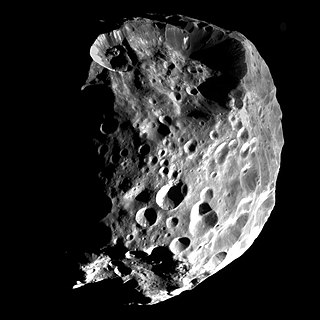
In astronomy, an irregular moon, irregular satellite, or irregular natural satellite is a natural satellite following a distant, inclined, and often highly elliptical and retrograde orbit. They have been captured by their parent planet, unlike regular satellites, which formed in orbit around them. Irregular moons have a stable orbit, unlike temporary satellites which often have similarly irregular orbits but will eventually depart. The term does not refer to shape; Triton, for example, is a round moon but is considered irregular due to its orbit and origins.
Philip D. Nicholson is an Australian-born professor of astronomy at Cornell University in the Astronomy department specialising in Planetary Sciences. He was editor-in-chief of the journal Icarus between 1998 and 2018.
2013 VZ70 is a centaur on a horseshoe co-orbital configuration with Saturn. It was first observed on 1 November 2013 by the Outer Solar System Origins Survey at Mauna Kea Observatory in Hawaii, United States. The discovery was announced on 23 August 2021.

S/2019 S 1 is a natural satellite of Saturn. Its discovery was announced by Edward Ashton, Brett J. Gladman, Jean-Marc Petit, and Mike Alexandersen on 16 November 2021 from Canada–France–Hawaii Telescope observations taken between 1 July 2019 and 14 June 2021.























